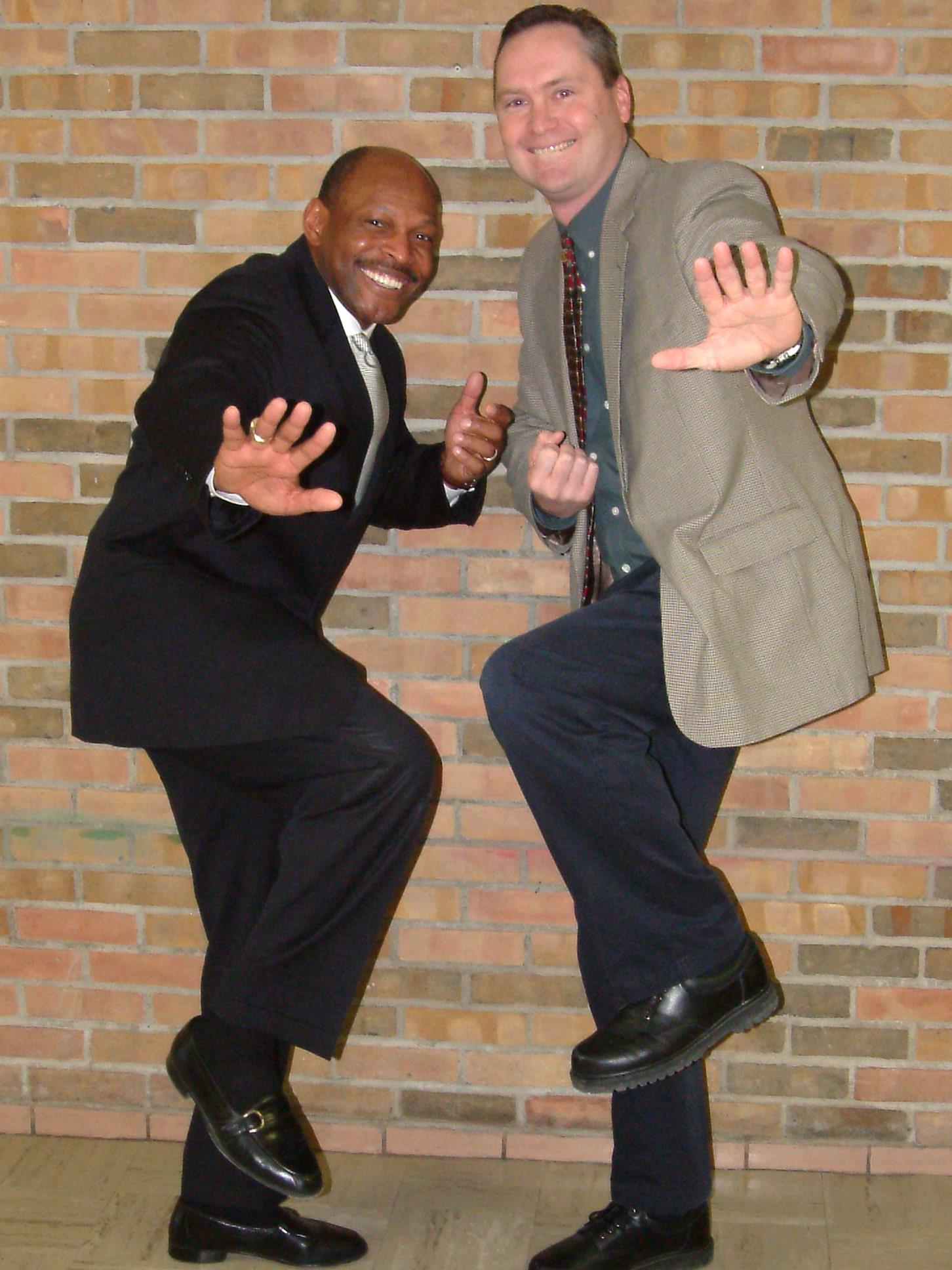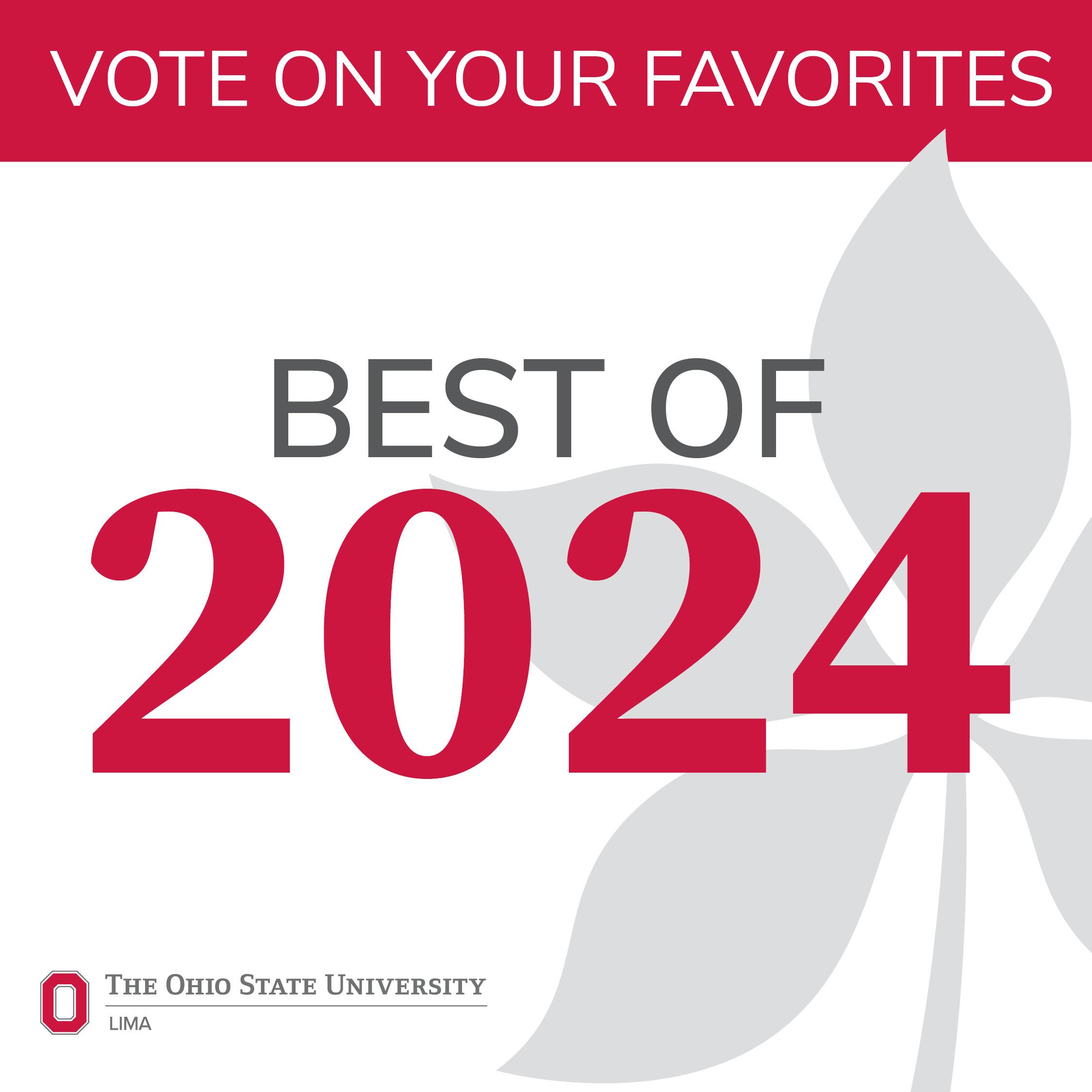Every year during awards season we hear talk of artistic types who have been named EGOTs for taking home the coveted combo of Emmy, Grammy, Oscar and Tony. Headlines scream, commentators gush because it is not easy to be good at so many things.
If the academic world had a similar designation, Dr. Joe Green’s name would be right at the top of the list. During his career at Ohio State Lima, he has earned all the teaching, research and scholarly awards we have to offer, some of them twice. At Ohio State Lima’s 2024 Academic Celebration, he added the Outstanding Service Award, which recognizes individuals who demonstrate and support the Buckeye idea of care for others, as well as carrying out the mission of the university on an ongoing basis.
Service
Green approach to service is similar to the approach to general problem solving he developed as one of 11 kids. To stand out, you had to do more than come up with a good idea, you had to take action.
“Seeing things that could be improved is easy,” Green said. “Everybody notices things that could be improved, but taking the next step and trying to come up with a constructive solution that's doable and not just wishful, that is more complicated.”
Green has taken action to spread his service out from Ohio State Lima to include his hometown of Bellevue and the entire state of Ohio. During his time as faculty assembly president he helped develop a process for faculty and staff to evaluate administrators on our campus, a more detailed and layered process than any of us could have expected. Over the years, he and his colleagues have developed a cognitive-based approach to smoking cessation that includes hypnosis, mindfulness and acceptance-based approaches. The latest iteration was piloted at Ohio State Lima and included campus and community members. His ongoing efforts in his home community as president of the Gridiron Foundation support both the school and town and have resulted in an improved and expanded athletic complex, a more beautiful downtown, and a growing endowment for scholarships for high school students.
Research mentor
Green applies the idea of turning abstract ideas into concrete action and knowledge to research and teaching as well. He models turning curiosity about a subject into a research question that you can collect empirical data on to strengthen the argument for or against its validity. As students in his classroom learn to how to do it as well, Green sees their confidence grow.
“That's all part of the goal of higher education is to instill greater confidence and assertiveness and willingness to insist upon good scientific evidence for claims that are being made as opposed to just accepting positions because a person in authority has stated them,” Green said.
Green realizes that he could likely conduct his research more quickly and more efficiently if he wasn’t mentoring students because doing so takes a lot of time, but he is a mentor anyway. He has been in his undergraduates’ shoes and knows what it takes to help them become better students, researchers and community citizens.
“I was fortunate enough to have great mentors during my academic career and throughout my life more broadly,” Green said. “Having someone to take the time to explain is invaluable.”
Teaching
Teaching has never become routine for Green in his 31 years at Ohio State. He preps for each lecture like it is a mini-performance with a lesson plan as the script and the ability to adjust to the students’ needs and questions as they develop.
“I try to script my lectures out to some extent,” Green said. “Once I get into the classroom, it's like improv because you never know where it's going to go or what questions are going to be asked or what topics students are going to be interested in on any given day.”
While he sees the utility of offering online and hybrid classes, he misses a fully in person teaching load. It is easier to engage and hold the class in a live setting. It is a workout both mentally and physically.
“The biggest thing I miss about not being in a physical classroom is not getting my steps in because I pace and wander around the classroom when I teach,” Green said with a chuckle. “Actually, part of this style is intentional as I want to change the sight line that students are looking at. I want to change the volume level that they are hearing. I want to change the source of where my voice is coming from as well. I will move from the front to the middle to the back of the class, from the left to the right, and so on, making eye contact with all of the students and encouraging them to respond to questions or participate in discussions. My movement also serves as a reminder that learning is an active process and something that you never outgrow.”
Dr. Green’s joy of learning is contagious as many of his students value their time in his class.
* * *
Dr. Joe Green is a professor of psychology at The Ohio State University at Lima. In the course of his career he has earned the prestigious Alumni Award for Distinguished Teaching (2004), Outstanding Scholar Award (2022 and 2015), Faculty Award for Sustained Student Mentorship (2022 and 2017), Outstanding Service Aware (2024), and the Teaching Excellence Award (2011).
Photo captions (from top): Dr. Joe Green on the Quad at Ohio State Lima, Archie Griffin and Joe Green strike a Heisman pose when Griffin surprised Green with the Alumni Award for Distinguished Teaching in 2004.


